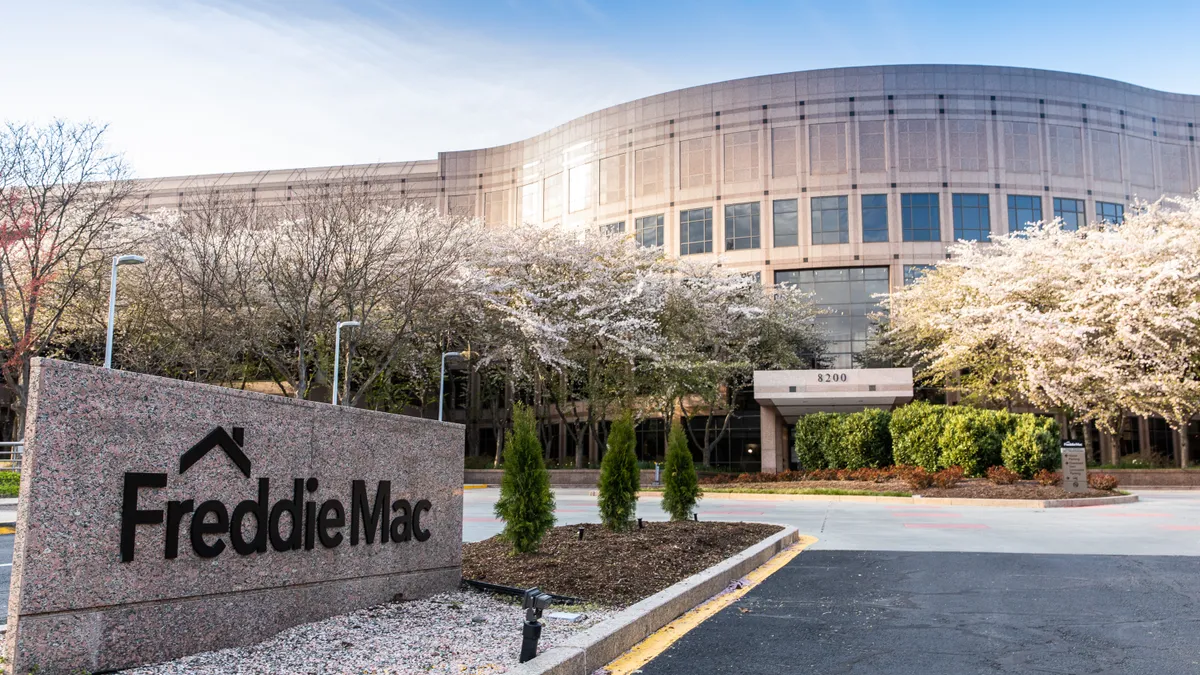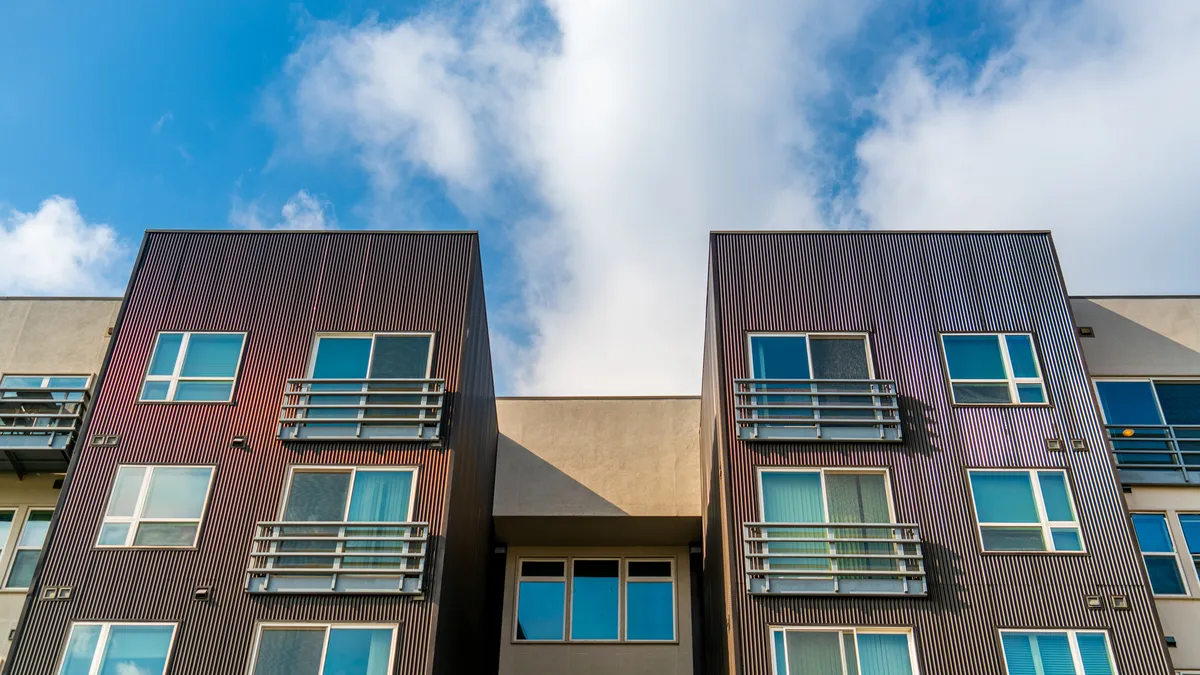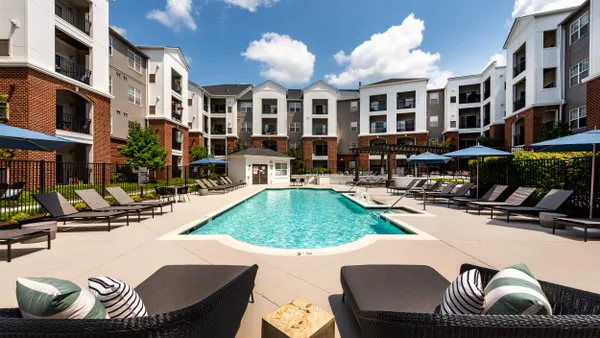Dive Brief:
- Overall, lending to apartment owners fell 53% year over year in the first half of 2023, according to a report that data firm MSCI Real Assets shared with Multifamily Dive.
- As other lenders backed away in the face of turmoil, the government-sponsored enterprises helped backstop the market and saw their originations increase 1% YOY in the second quarter of 2023. Overall, they claimed 58% of all loans in the first half of the year and 60% in Q2.
- Regional banks pulled back from the market after the collapses of Silicon Valley Bank and Signature Bank in March. In the first quarter, before the impacts of the failures were fully felt, these lenders captured 22% of the market, coming in second behind the GSEs. In Q2, they claimed just 12% of the market, their largest dropoff since MSCI began tracking in 2011.
Dive Insight:
It's no surprise to see Fannie Mae and Freddie Mac lead the market in times of turmoil. In the years after the global financial crisis of 2008, the GSEs kept the multifamily finance market afloat. And they’ve come to the rescue more recently in 2020 when COVID-19 slowed the market.
Matt Rosenthal, president at Boca Raton, Florida-based real estate investor and owner Eastham Capital, said his firm and its partners mainly rely on agency debt because of favorable spreads despite more stringent debt service coverage ratios.
“You're not getting the proceeds that we used to get in the good old days, but it's solid,” he told Multifamily Dive. “The interest rate is good, and it’s Freddie. They’re not going anywhere.”
Other lending sources
Life insurance companies and international banks may have fared the best outside of the GSEs. They saw the shallowest declines, capturing 8% and 3% of the market, respectively, in the first half of 2023, according to MSCI.
Rosenthal said local banks are still in the market, but those are generally special situations. "We're doing a couple of deals with some local banks because they like financing in their backyard and putting the sign up,” he said. “But you have to have a long-term relationship.”
The debt funds, which had been large players in the market, have largely disappeared, according to Rosenthal. “I think they're doing the best they can to save the loans they have made,” he said.
On the construction side, where the GSEs don’t lend, finding loans is even harder. However, some developers can find debt if their deals are attractive. Sunstone Two Tree, a rental housing developer and owner based in Westlake Village, California, was able to put a 29-acre lot under contract in 2021. After some fluctuations in the market, the company was able to find financing for a 320-unit community.
“We certainly had to work harder,” Sunstone Two Tree President Scott Maddux said. “We talked to a number of different lenders, and we're fortunate to find a handful of groups that were excited about being our lender.”
Click here to sign up to receive multifamily and apartment news like this article in your inbox every weekday.











